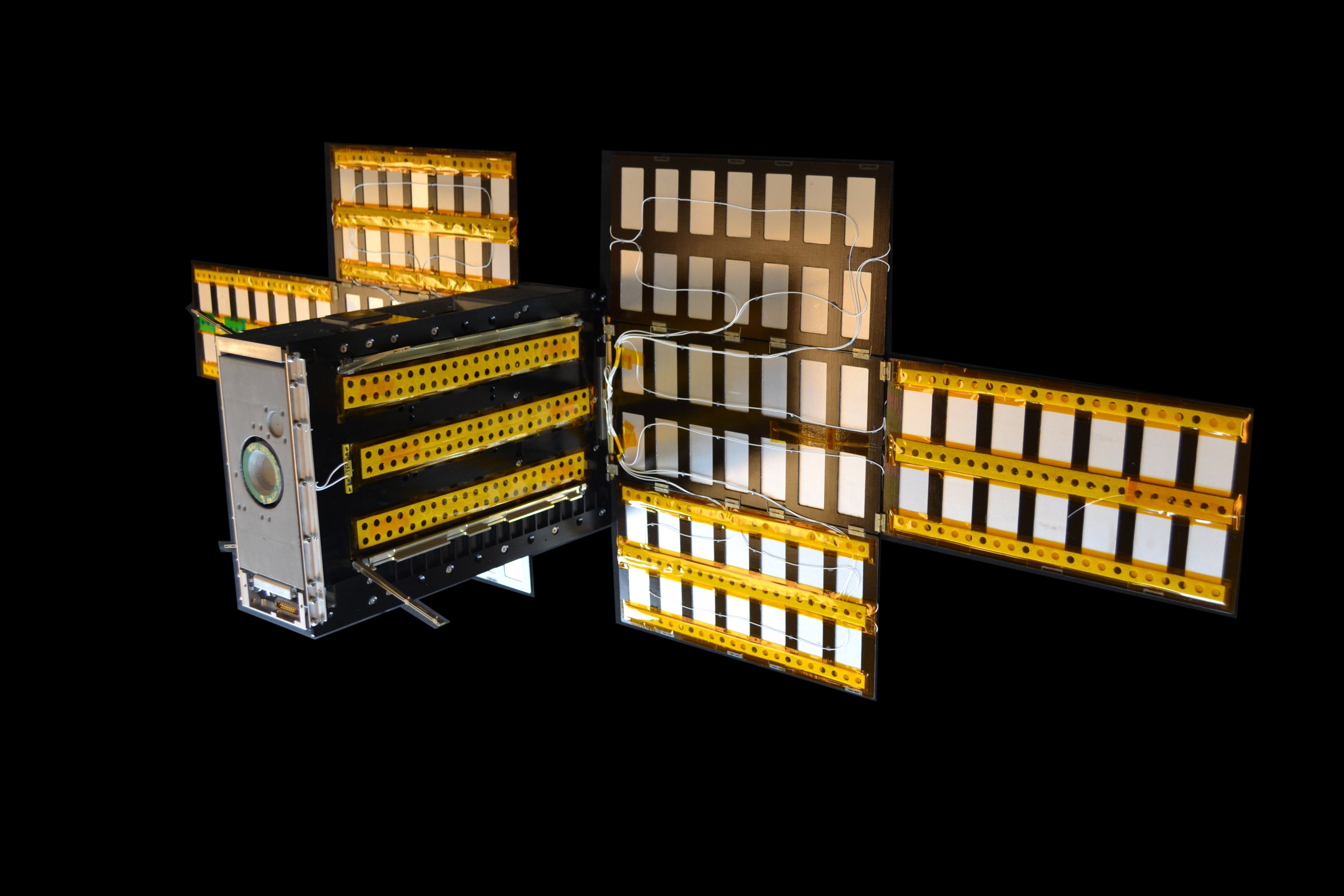
A tiny NASA moon probe failed to perform a crucial maneuver as planned on Monday (Nov. 21), but the cubesat might still be able to salvage its water-hunting mission.
The LunaH-Map spacecraft is one of 10 cubesats that launched as ride-along payloads last Wednesday (Nov. 16) on NASA's Artemis 1 mission.
LunaH-Map was designed to map the distribution and abundance of hydrogen — and, by extension, water ice — near the moon's south pole. Such data is of great interest to NASA's Artemis program, which aims to build a crewed research outpost in this region.
Related: Amazing views of NASA's Artemis 1 moon rocket debut (photos)
Live updates: NASA's Artemis 1 moon mission
The cubesat was supposed to perform an engine firing during its flyby of the moon on Monday but failed to do so, likely because of a stuck valve in its propulsion system, NASA officials said.
But all is not necessarily lost. LunaH-Map's other systems appear to be functioning normally, and heating the valve might free it, bringing the propulsion system online as well.
"If the propulsion system is able to achieve thrust within the next few months, the mission may still recover some or all of LunaH-Map's original science mission," NASA officials said in an update on Tuesday (Nov. 22). "On the spacecraft's current path, alternate trajectories are available to achieve lunar orbit — including orbits that could enable low-altitude measurements of the lunar surface."
Get the Space.com Newsletter
Breaking space news, the latest updates on rocket launches, skywatching events and more!
And LunaH-Map could still find work farther afield if it takes even longer to fix the current glitch, NASA officials explained in the update: "Trajectory solutions outside of the Earth-moon system may exist to fly close to certain asteroids and characterize their hydrogen content."
LunaH-Map, which is led by researchers at Arizona State University, isn't the only Artemis 1 cubesat to suffer problems after being deployed by the mission's Space Launch System rocket. For example, Japan's OMOTENASHI probe experienced communications issues and failed to drop a tiny lander on the moon as a result.
NASA's Near Earth Asteroid (NEA) Scout probe has apparently been silent since the Nov. 16 launch, as has the citizen scientist cubesat Team Miles. And the LunIR spacecraft may be experiencing some trouble as well.
Artemis 1, the first mission of the Artemis program, is sending an uncrewed Orion capsule on a nearly 26-day journey to lunar orbit and back.
Orion is scheduled to slip into a distant retrograde orbit around Earth's natural satellite on Friday (Nov. 25). The capsule will spend about a week there and then head back toward Earth, arriving here in an ocean splashdown on Dec. 11.
If all goes according to plan, Artemis 2 will launch astronauts around the moon in 2024 and Artemis 3 will put boots down near the lunar south pole a year or so later.
Mike Wall is the author of "Out There" (Grand Central Publishing, 2018; illustrated by Karl Tate), a book about the search for alien life. Follow him on Twitter @michaeldwall. Follow us on Twitter @Spacedotcom or Facebook.
Join our Space Forums to keep talking space on the latest missions, night sky and more! And if you have a news tip, correction or comment, let us know at: community@space.com.

Michael Wall is a Senior Space Writer with Space.com and joined the team in 2010. He primarily covers exoplanets, spaceflight and military space, but has been known to dabble in the space art beat. His book about the search for alien life, "Out There," was published on Nov. 13, 2018. Before becoming a science writer, Michael worked as a herpetologist and wildlife biologist. He has a Ph.D. in evolutionary biology from the University of Sydney, Australia, a bachelor's degree from the University of Arizona, and a graduate certificate in science writing from the University of California, Santa Cruz. To find out what his latest project is, you can follow Michael on Twitter.









